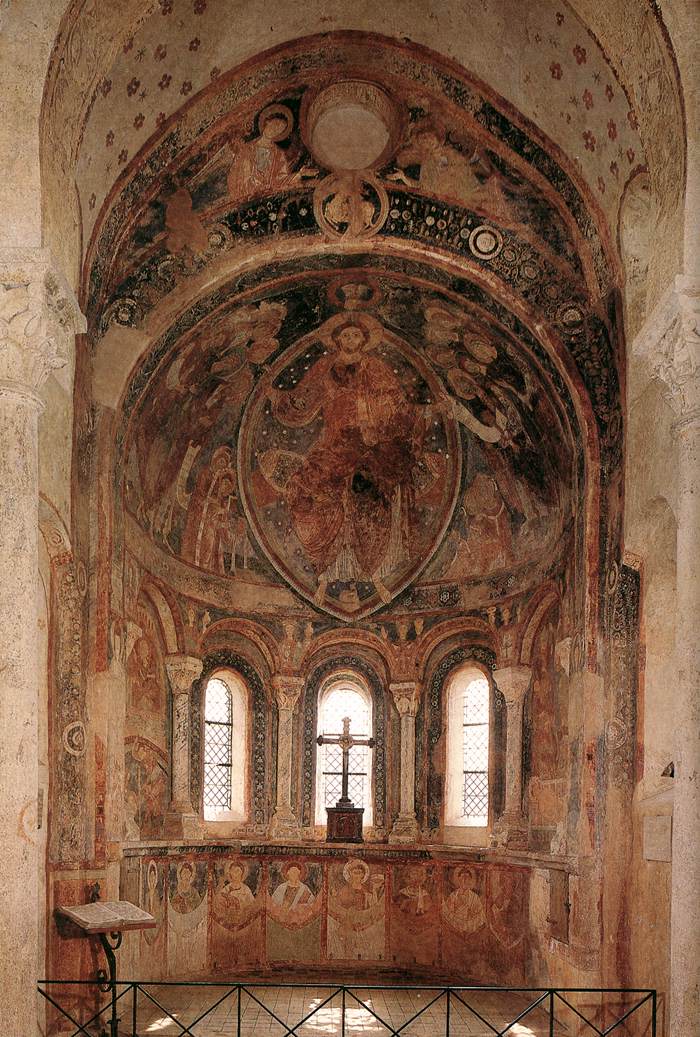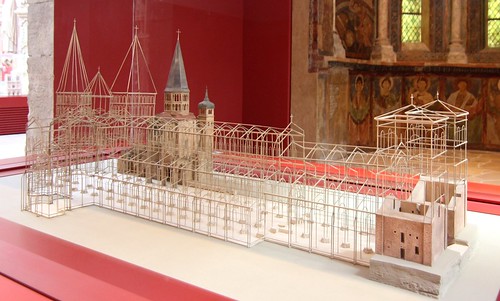Some readers versed in medieval History or sacred architecture will know the name Cluny immediately. A monastery famous for the abbot St. Hugh, for the diffusion of Benedictine monasticism in France, and for two particularly great reformer-Popes (St. Gregory VII and Urban II), Cluny was perhaps the most iconic religious center of Europe in the Middle Ages. A community of remarkable wealth, the monks had different colored habits for the corresponding color of the day or liturgical season. Cluny did not possess a reputation for taking penance very seriously.
At its height the abbey boasted hundreds of monks and a separate segment of the complex for the housing and education of novices. The order's spreading of monasticism eventually led to its own undoing, as more people joined Cluniac priories or new orders that arose during the high Middle Ages, such as the Cistercians. The Great Western Schism further weakened the monastery and the French Revolution ended up as the straw that broke the camel's back—the archives were incinerated and the abbey church became a rock quarry.
The abbey church of Cluny, in its third incarnation, was large enough to give St. Peter's and St. Paul Outside the Wall in Rome a serious run for the title "largest church in the world." The church has dozens of substantially sized chapels for private Masses, which pilgrims probably attended when passing through the abbey. In the morning and evening one or two hundred monks would line each side of the choir for Mattins, Lauds, Vespers, and Compline, and the conventual Mass(es).
Today only one transept of the abbey church, the third built on that spot, survives. Although Romanesque, it looks a little bit Armenian, with the octagonal sides and vertically accentuated windows.
The inside of the remnant
 |
| From americansinfrance.net |
A model collating the remnant with a skeleton of the actual abbey church
A layout of the monastery proper. Note the narrow entrance to the abbey church, which widens in
the narthex, and more so in the nave. Windows would have progressively increased in size,
illuminating the church as one approached the sanctuary, which would be washed in bright light, a physical reminder of the spiritual journey to God. The placing of the baptismal font in the rear of
most churches reflects the same idea.
A drawing of the sanctuary and transepts. The rood screen, which has no rood in this image, separates
the sanctuary from the nave. Note the communion rail. I do not know which era the artist intended to
capture in this image, but the railing seems improper, unless I am missing something.
 |
| from: learn.columbia.edu |
A cross section of the same area
 |
| from: soffits.wordpress.com |
One artist's idea of what walking through the abbey might have been like. Unfortunately the artist has neglected the colorful décor of the Middle Ages. Statues, or even walls, would have been painted in numerous beautiful colors, depicting Christ, angels, saints, and events in an overwhelming visual blaze.
 |
| from: http://flashinformatique.epfl.ch/spip.php?article1360 |
The exterior of the church
 |
| from: ioansoran.wordpress.com |
A large-scale depiction of the entire Cluniac complex
 |
| from: brynmawr.edu |
A cutaway of the church, exposing the bases of the columns, whereby the arches would force the pillars to support one another
The apse of the abbey's retreat chapel, likely a replica of the apse of the conventual church
 |
| from: wga.hu |
A 3D reconstruction of the church
We are in dire need of a greater emphasis on the vertical and on color and luminosity in Christian architecture today. Let us drop the psuedo-simplistic, bare-walls style of modern day, and also that "sweet" look so popular in a lot of 19th and early 20th century churches, and go for that which makes man look up to God. Even in a small parish this is a very plausible endeavor.
Was this that much cheaper to build....
....than this?
Come on.






Excellent Post, Rad Trad, on the magnificent edifice that was Cluny Abbey.
ReplyDeleteZephyrinus had a similar Post, recently, at http://zephyrinus-zephyrinus.blogspot.co.uk/2013/02/virtual-reconstruction-of-cluny-abbey.html
Your Readers might wish to have a look.